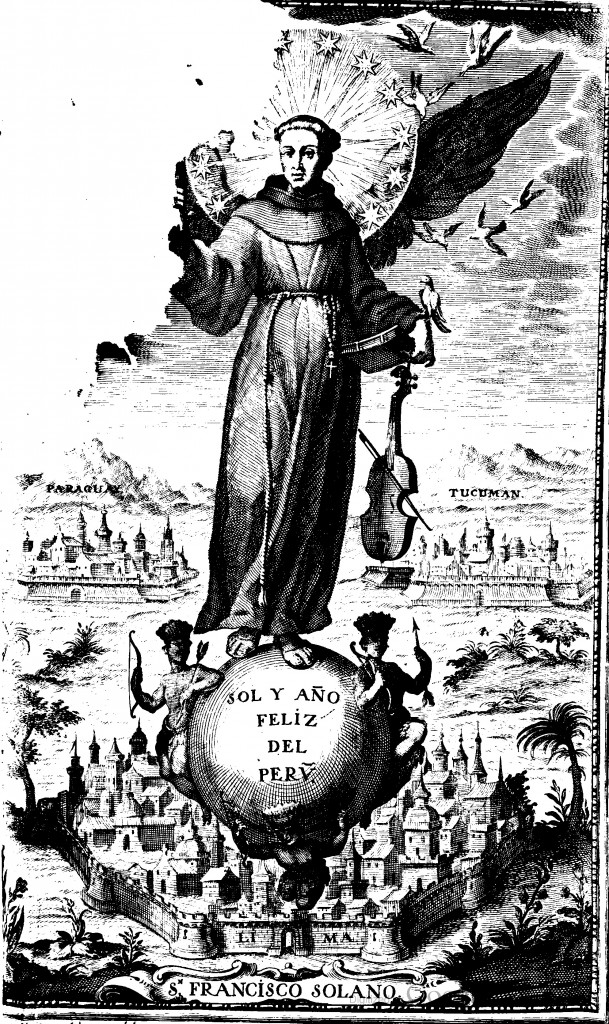When Francisco Solano died at the Franciscan convent in Lima, flocks of birds surrounded his body and music filled the halls of the cloister. Solano’s most distinguished hagiographer, the Peruvian Creole Diego de Cordova Salinas, concluded in 1643 that Solano, who had converted Indians in Paraguay with his violin, was a walking tree of paradise, on which birds perched to sing. He described in detail Solano’s many miracles, from curing the ulcerous wounds of children and lepers in Andalusia with his tongue, to his mastery over animals. Solano’s miraculous control over crabs had, for example, saved the lives of both slaves and masters in the New World.
Francisco Solano, ‘Sun of Peru’
Francisco Solano, ‘Sun of Peru’, as violinist. Pedro Rodríguez Guillén, Sol y año feliz del Perú San Francisco Solano, apóstol y patrón universal de dicho reyno (Madrid, 1735; public domain).
Jorge Cañizares-Esguerra
Further reading
- Gálvez Peña, C.M. (2008) ‘El carro de Ezequiel: la monarquía hispana de fray Buenaventura de Salinas y Córdova’, Histórica, 32 (1): 39–75.
- Gálvez Peña, C.M. (2011) ‘Sueños, profecías, visiones y política en las crónicas limeñas del siglo XVII’, in Los sueños en la cultura iberoamericana, siglos XVI–XVIII, edited by S.V. Rose, P. Schmidt, and G. Weber (Seville: Consejo Superior de Investigaciones Científicas).
- Jouve-Martín, J.R. (2004) ‘En olor de santidad: hagiografía, cultos locales y escritura religiosa en Lima, siglo XVII’, Colonial Latin American Review, 13 (2): 181–98.
- Rubial, A. (2006) Profetisas y solitarios: espacios y mensajes de una religión dirigida por ermitaños y beatas laicos en las ciudades de Nueva España (Mexico City: Fondo de Cultura Económica).





